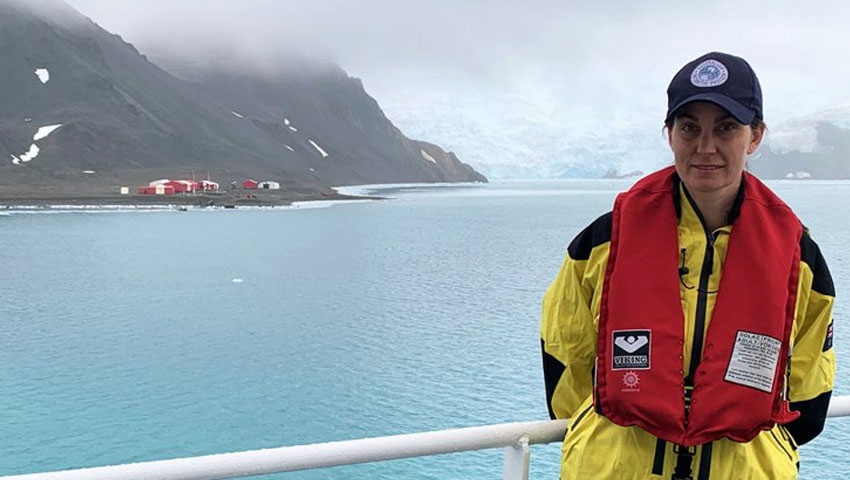Navy Hydrographer Lieutenant Danielle Britton has embarked on a six-week voyage to Antarctica’s South Shetland Islands on-board Peruvian Navy polar research vessel BAP Carrasco.
The placement is the first of its kind between the two navies, becoming an opportunity to engage with Australia’s friends across the Pacific, but a unique opportunity for the hydrographic service to broaden the experience of its people.
“Being a Navy ship – it was a familiar yet foreign environment onboard,” LEUT Britton said.
“The Peruvian Navy structure is much like ours, however, the food and daily routine are quite different.
“The working hours also extend well into the night due to the Peruvian adherence to siestas, a custom which I had to quickly adjust to in order to get enough sleep.”
After sailing from Punta Arenas with the Australian Navy officer on board, BAP Carrasco transited through the breathtaking Chilean Patagonian channels to the southern tip of the South American continent.
“Our first attempt to cross the infamous Drake Passage was unsuccessful,” LEUT Britton said.
“Many of the crew and embarked scientists went down with seasickness.
“When we later made the crossing there was a lot of excitement on board as we passed the 60 degrees south parallel into Antarctic territory.
“Humpback whales and swimming Gentoo penguins became a very common sight as the ship sailed further south.”
The crew completed a base resupply at the Peruvian research base Machu Picchu on King George Island.
Australian Navy hydrographic units deploy to Antarctica primarily to conduct shore-based, small boat bathymetric surveying in support of the safety of navigation, while BAP Carrasco’s taskings were largely oceanographic in nature.
The ship's primary role is to support scientific research projects from national and international universities.
“From underwater volcanoes to sub-seafloor profiling for magnetic currents, there was always something fascinating to get involved in,” LEUT Britton said.
“This voyage has opened my eyes to how other countries conduct Antarctic operations.
“I am interested to see how Australia’s whole-of-government approach to Antarctic operations evolve with the introduction of the impressively capable Australian Antarctic vessel RSV Nuyina, replacing Aurora Australis in 2020.”






